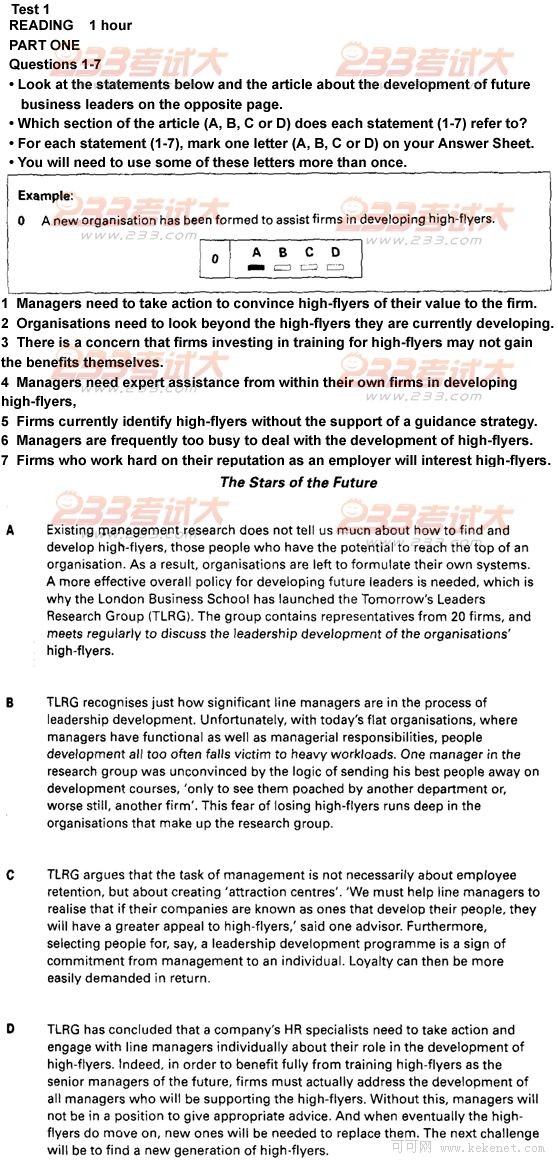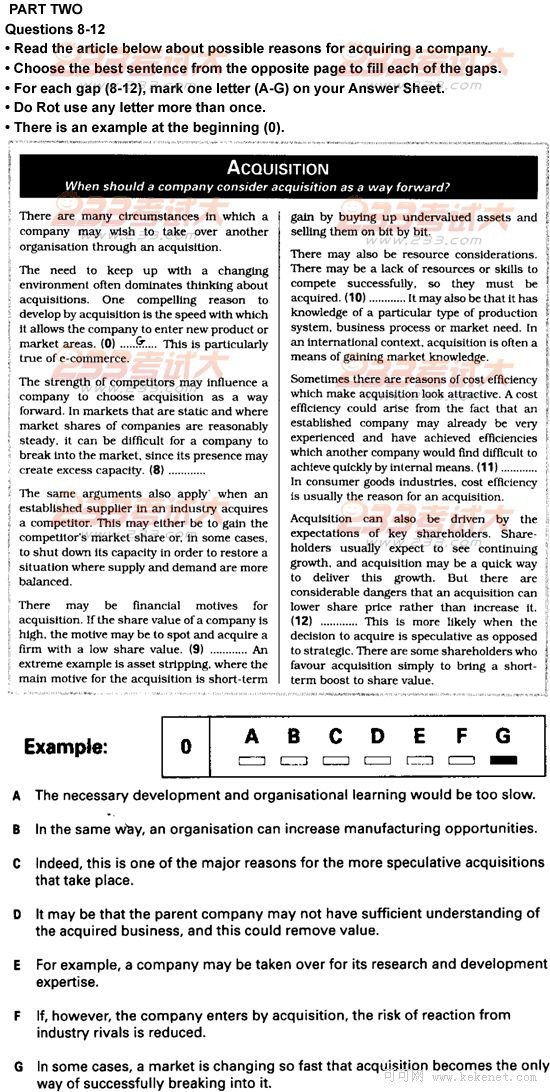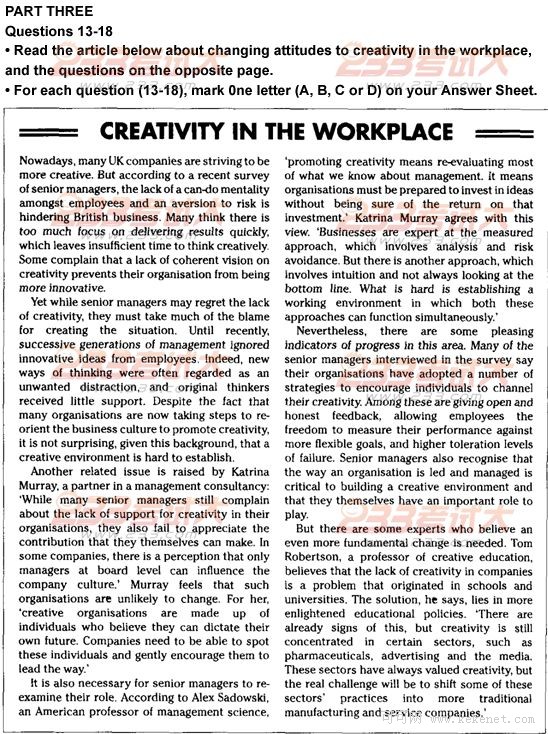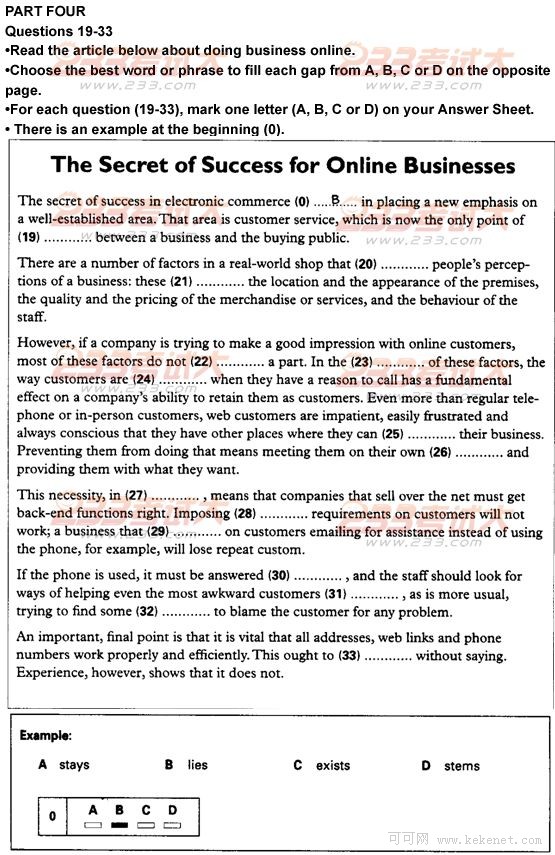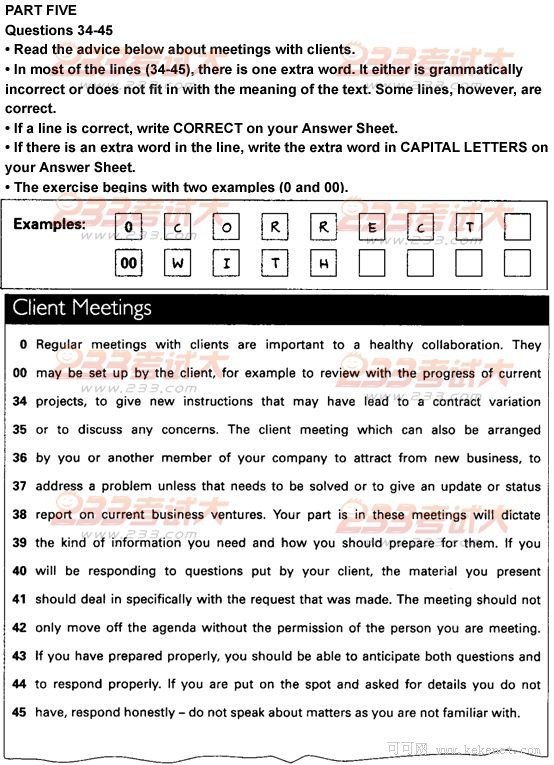(单词翻译:单击)
13 Many senior managers feel that organisations have difficulties innovating because of
A a poor level of skills among employees.
B an emphasis on rapid achievement.
C an increased risk associated with change.
D an insistence on a standard company philosophy.
14 According to the writer, many organisations today are
A finding it easier to introduce a creative approach.
B having problems understanding innovation as a concept.
C actively developing the conditions for a creative approach.
D resisting innovative staff suggestions.
15 In the third paragraph, Katrina Murray expresses the view that
A top management must dictate the pace of change.
B some employees lack a commitment to change.
C most organisations are incapable of bringing about effective change.
D some senior managers underestimate the role they can play in achieving change.
16 Alex Sadowski and Katrina Murray agree that to be truly innovative, organisations must
A invest in the right managers.
B place less emphasis on financial considerations.
C have a double focus to their policies.
D adopt an approach with clearly defined stages.
17 According to the survey, which of the following strategies has been introduced to encourage creativity?
A a greater acceptance of error
B financial rewards for higher levels of creativity
C the introduction of specific performance targets
D the promotion of creative individuals to senior posts
15 Tom Robertson believes that, in the future, it will be difficult to achieve
A an educational system that encourages creativity.
B a combination of practices that promote creativity.
C the spread of creativity to a range of businesses.
D a greater respect for creativity in pharmaceutical companies.
19
A relationship
B association
C meeting
D contact
20
A force
B determine
C decide
D fix
21
A enclose
B consist
C include
D contain
22
A get
B run
C play
D have
23
A absence
B lack
C need
D scarcity
24
A cared
B treated
C dealt
D considered
25
A deliver
B bring
C move
D take
26
A policies
B standards
C terms
D conditions
27
A turn
B sequence
C line
D order
28
A dense
B rigid
C deep
D solid
29
A demands
B insists
C expects
D instructs
30
A punctually
B precisely
C promptly
D presently
31
A apart from
B other than
C except for
D rather than
32 A case
B excuse
C fault
D purpose
33
A do
B make
C go
D come
KEY
Test 1 Reading
Part 1
1C 2D 3B 4D 5A 6B 7C
Part 2
8 F 9 C 10 E 11 A 12 D
Part 3
13 B 14 C 15 D 16 B 17 A 18 C
Part 4
19 D 20 B 21 C 22 C 23 A
24 B 25 D 26 C 27 A 28 B
29 B 30 C 31 D 32 B 33 C
Part 5
34 HAVE 35 WHICH 36 FROM
37 UNLESS 38 IS 39 CORRECT
40 CORRECT 41 IN 42 ONLY
43 BOTH 44 CORRECT 45 AS

